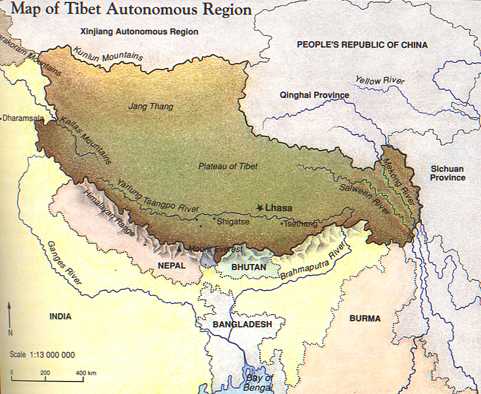[GEOLOGY]

Tibet, sometimes called “the roof of the world,” is located in one
of the most spectacular terrains of the earth. The Himalayan Mountains
provide the backbone for South Central Asia. The highest point on
Earth and perhaps the most well known mountain peak in the world, Mt. Everest,
is found here. The Tibetan people call this mountain Chuomolongma.
It towers over all at over 29,000 feet above sea level. (For more
information about Mt. Everest, check out www.mteverest.com).
One way to better understand just how high Mt Everest is would be to
call your local post office and ask what the altitude of your town or city
is.
The Himalayan range is 1,500 miles long, running along the national
borders of India, Nepal, Tibet, and Bhutan at various points. One
of the youngest mountain ranges on earth, the Himalayans continue to increase
in size by at least one centimeter a year. This might not sound like a
lot to you, but consider the fact that even though they are “young” mountains
(compared to other ranges), they have been growing for millions of years.
A million centimeters of growth sounds a lot more impressive!
Some three million years ago, however, this part of the world was the
floor of a shallow sea called the Tethys Sea. Geologists know this
because marine fossils have been found on some peaks at 12,000 feet in
elevation. In other words, water once separated Tibet from India -- before
the age of dinosaurs!!! Since that time, however, the friction of
geologic (tectonic) plates has produced some of the tallest and most impressive
mountains on earth.
|